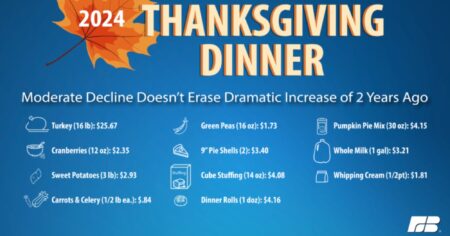As of Nov. 17, eight of the country’s top 18 winter-wheat-growing states had planted 100% of the season’s crop, according to the USDA Crop Progress report released Monday. Here are those states, along with emergence progress and the condition of the crop for each.
Washington
Washington’s winter wheat planting has been done the longest of the top 18 growing states. Farmers in the state actually finished planting the crop the week ending Oct. 27, ahead of the five-year average (96%).
The state’s winter wheat crop has now completely emerged, too. As of the week ending Nov. 17, 100% of Washington’s winter wheat had emerged, an increase of 1 percentage point for the week. With that, emergence is 7 percentage points ahead of the five-year average.
Washington’s winter wheat was rated as follows by USDA: 2% very poor, 8% poor, 37% fair, 42% good, and 11% excellent.
Nebraska
Nebraska farmers have had the entirety of their winter wheat in the ground since the week ending Nov. 3, which was on track with the five-year average.
As of the week ending Nov. 17, 91% of the crop had emerged, an increase of just 1 percentage point for the week. Winter wheat emergence is behind the five-year average of 99%.
USDA rated Nebraska’s winter wheat 7% very poor, 20% poor, 39% fair, 28% good, and 6% excellent.
Idaho
Idaho’s winter wheat planting has been complete since the week ending Nov. 10, which was on track with the five-year average.
With planting wrapped up, emergence reached 95% the week ending Nov. 17, just shy of the five-year average of 96%.
Only 1% of Idaho’s winter wheat was rated less than fair. Overall, the state’s winter wheat crop was rated 0% very poor, 1% poor, 52% fair, 41% good, and 6% excellent.
South Dakota
Winter wheat planting in South Dakota wrapped up the week ending Nov. 10. That was on par with the five-year average.
Emergence of the crop reached 83% the week ending Nov. 17, up 8 percentage points for the week. That’s 11 percentage points behind the five-year average.
South Dakota’s winter wheat crop was rated by USDA as 4% very poor, 27% poor, 43% fair, 22% good, and 4% excellent.
Michigan
Michigan’s winter wheat planting also reached 100% the week ending Nov. 10. That was 8 percentage points ahead of the five-year average for the state.
Wheat emergence was at 96% as of Nov. 17, 4 percentage points higher than the week prior. With that, emergence is actually ahead of the five-year average by 8 percentage points.
USDA rated the state’s crop as follows: 0% very poor, 1% poor, 25% fair, 57% good, and 17% excellent.
Montana
Winter wheat planting in Montana reached 100% the week ending Nov. 17, up from 99% the week prior. That’s 1 percentage point ahead of the five-year average.
Emergence hit 91%, an increase of 5 percentage points for the week. With that, emergence is 3 percentage points ahead of average.
Montana’s winter wheat was rated 6% very poor, 9% poor, 50% fair, 35% good, and 0% excellent. It’s the only one of the top 18 winter-wheat-growing states with none of the crop rated excellent.
Ohio
In Ohio, winter wheat planting reached 100% the week ending Nov. 17, an increase of 1 percentage point since the week before. That’s ahead of the five-year average of 99%.
Emergence reached 94% by Nov. 17, an increase of 8 percentage points since the previous week. That puts the state ahead of its five-year average by 2 percentage points.
USDA rated Ohio’s winter wheat 1% very poor, 4% poor, 36% fair, 47% good, and 12% excellent.
Oregon
Oregon’s winter wheat planting wrapped up on Nov. 17, just ahead of the five-year average of 98%.
Emergence hit 88% in Oregon by Nov. 17, up 16 percentage points in the week. That’s far exceeding the five-year average of 74%.
The state’s crop was rated 2% very poor, 8% poor, 30% fair, 37% good, and 23% excellent.


:max_bytes(150000):strip_icc()/CortevaLegal_VerColor-6c8dbdeb7a384ebf83d06078ab53850f.png)
:max_bytes(150000):strip_icc()/Busakorn20Pongparnit_1253793575-2000-9a17b63f8b8b425794170cde1c6a8021.jpg)
:max_bytes(150000):strip_icc()/Nelson20tree20and20barn-2-2000-1c8a0ec162d44e7a8918871565cb57b2.jpg)


:max_bytes(150000):strip_icc()/Millershaski1-2000-2618057f3ab64079bbe3c12c2bf91716.jpg)


:max_bytes(150000):strip_icc()/new-unverferth-2520-double-auger-grain-cart-62f642fdeeeb4e8baeda210515d9a8f9.jpg)